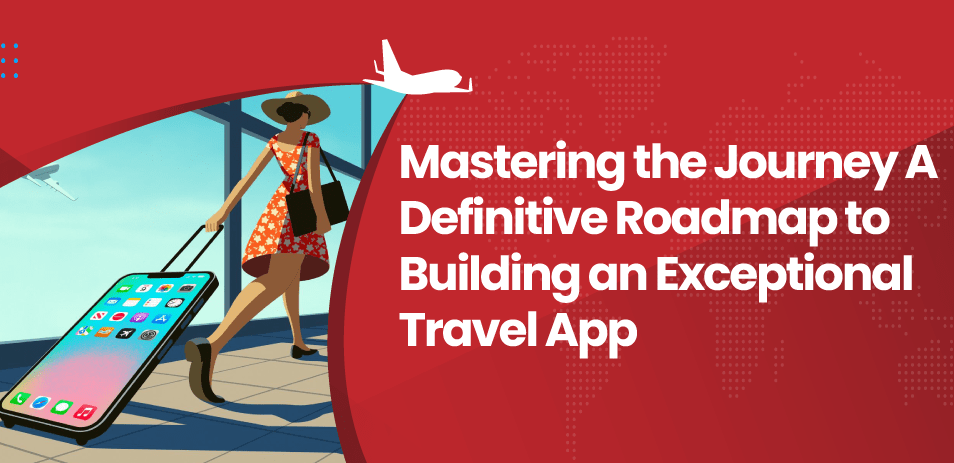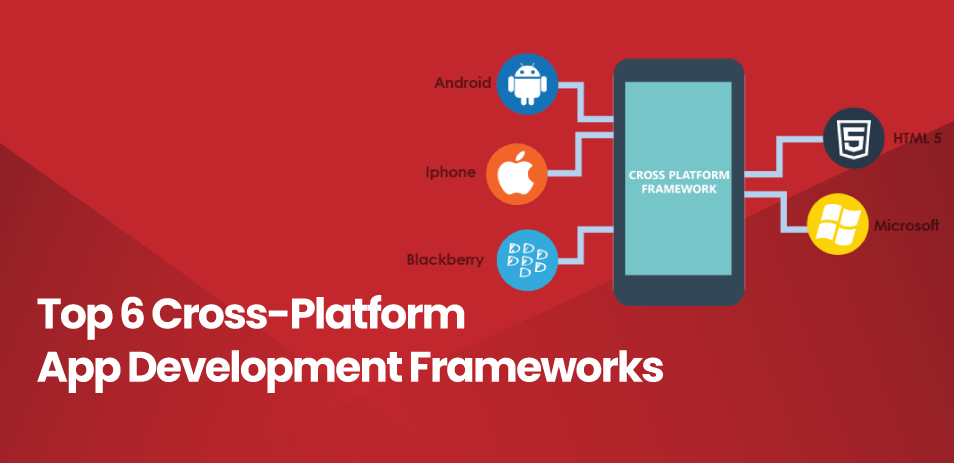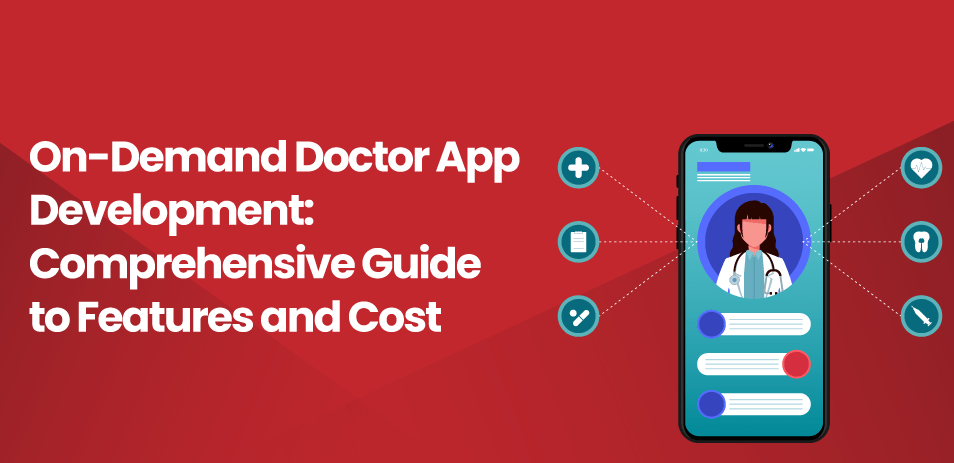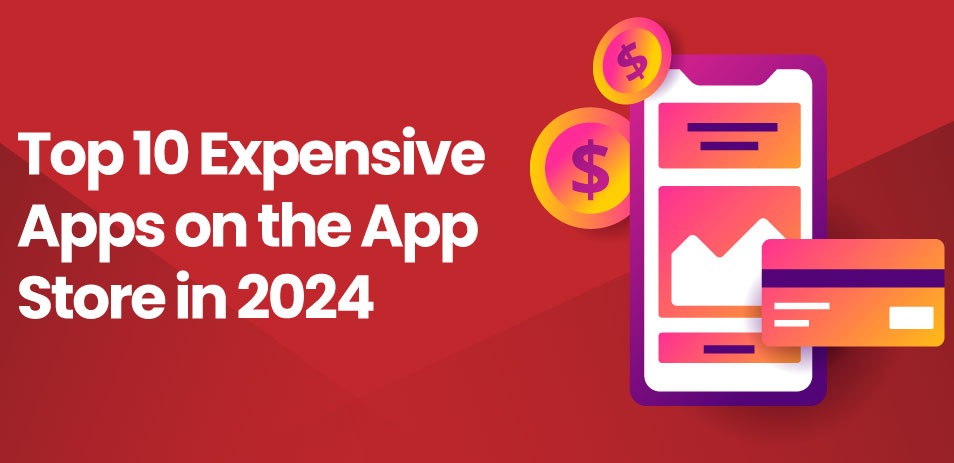Whether it’s for business or leisure, people are constantly on the move, seeking new experiences, and exploring different destinations. With the rise of smartphones and digital technology, the way we plan, book, and experience travel has undergone a significant transformation. This shift has led to a surge in the demand for travel apps that cater to various aspects of the journey, from itinerary planning to accommodation booking, navigation, and beyond.
The convenience offered by travel apps is unparalleled, allowing users to access a wealth of information, services, and tools right at their fingertips. Whether it’s finding the best flight deals, discovering local attractions, or navigating unfamiliar territories, travel apps have revolutionized the way we explore the world. As a result, the market for travel apps has experienced exponential growth, with an increasing number of developers venturing into this lucrative domain to capitalize on the burgeoning demand.
In this blog, we will delve into the intricacies of building an exceptional travel app, offering a definitive roadmap for mobile app developers company Dallas looking to embark on this exciting journey. We will explore every stage of the app development lifecycle, from initial planning and design to deployment, launch, and post-launch strategies. Drawing upon industry insights, best practices, and real-world examples, we will provide actionable guidance and practical tips to help developers overcome common challenges, leverage emerging trends, and build a travel app that stands out in a crowded marketplace.
Understanding the Landscape of Travel Apps
Current State of the Travel Industry
The travel industry has undergone significant transformations in recent years, propelled by advancements in technology, shifting consumer preferences, and global socio-economic changes. Despite facing challenges such as economic downturns, natural disasters, and health crises, the travel industry has demonstrated remarkable resilience and adaptability.
In the wake of the COVID-19 pandemic, the travel industry experienced unprecedented disruptions, with travel restrictions, lockdowns, and border closures bringing international travel to a standstill. However, as vaccination efforts ramp up and travel restrictions gradually ease, there is cautious optimism for a revival in travel demand. Moreover, the pandemic has spurred innovation and accelerated digitalization within the travel industry, leading to the emergence of new opportunities and business models.
- The global indicator ‘Revenue By Segment’ in the ‘Travel’ segment of the app market was forecast to continuously increase between 2023 and 2027 by in total 0.8 billion U.S. dollars (+64 percent). After the tenth consecutive increasing year, the indicator is estimated to reach two billion U.S. dollars and therefore a new peak in 2027.
- Over 800 million people worldwide used travel apps in 2022.
- Booking.com was the most downloaded travel app in 2022, with over 80 million downloads.
Popular Types of Travel Apps and Their Functionalities
- Flight Booking Apps: These apps enable users to search for flights, compare prices, and book tickets conveniently. They often provide features such as real-time flight status updates, seat selection, and itinerary management.
- Accommodation Booking Apps: From hotels and vacation rentals to hostels and boutique stays, accommodation booking apps offer a wide range of options for travelers to find and book their ideal lodging. They may include features like reviews, photos, and filters for personalized search results.
- Navigation and Maps Apps: Navigation apps like Google Maps, Waze, and Apple Maps are indispensable tools for travelers, offering real-time navigation, traffic updates, and point-of-interest recommendations. They help users navigate unfamiliar destinations with ease and efficiency.
- Travel Planning and Itinerary Apps: These apps assist users in planning their trips, organizing their itinerary, and discovering attractions, activities, and dining options at their destination. They may offer features such as trip planners, offline maps, and personalized recommendations based on user preferences.
- Travel Expense Management Apps: Travel expense management apps help users track their travel expenses, manage receipts, and create expense reports for reimbursement or budgeting purposes. They streamline the expense tracking process and provide insights into travel spending patterns.
- Local Discovery and Experience Apps: For travelers seeking authentic local experiences, local discovery apps curate recommendations for hidden gems, off-the-beaten-path attractions, and unique experiences in a destination. They facilitate immersive travel experiences beyond the tourist hotspots.
Key Players and Successful Examples
- Booking Holdings: As one of the largest online travel companies in the world, Booking Holdings operates several popular travel platforms, including Booking.com, Priceline, and Kayak. These platforms offer comprehensive booking services for flights, accommodations, rental cars, and more.
- Expedia Group: Expedia Group owns a portfolio of leading travel brands, including Expedia, Hotels.com, Vrbo, and Orbitz. These platforms cater to a wide range of travel needs, from booking flights and accommodations to planning activities and exploring destination guides.
- Airbnb: Airbnb revolutionized the travel accommodation industry with its peer-to-peer lodging marketplace, allowing travelers to book unique accommodations directly from hosts around the world. With its vast inventory of listings, Airbnb offers travelers unparalleled flexibility and choice in their accommodations.
- TripAdvisor: TripAdvisor is a popular travel platform that provides user-generated reviews, ratings, and recommendations for hotels, restaurants, attractions, and more. It helps travelers make informed decisions and plan their trips based on authentic peer feedback and insights.
- Google Travel: Google Travel integrates various travel-related services, including flight and hotel search, itinerary planning, and travel guides, into a single platform. Leveraging Google’s powerful search capabilities and machine learning algorithms, Google Travel offers personalized recommendations and seamless travel planning experiences.
Let’s transform your vision into reality.
Start building your app today and unlock endless possibilities for travelers worldwide!
Yes Let’s goPre-Development Phase
Market Research and Defining Target Audience
Before embarking on the development of a travel app, it’s essential to conduct comprehensive market research to understand the dynamics of the travel industry, identify emerging trends, and assess the competitive landscape. This involves analyzing market data, consumer behavior patterns, and industry reports to gain insights into market size, growth potential, and key market segments.
- Market Segmentation: Segment the target market based on demographics, psychographics, and travel preferences. Identify specific traveler personas, such as leisure travelers, business travelers, solo travelers, family travelers, adventure seekers, luxury travelers, etc.
- Competitor Analysis: Analyze existing travel apps and platforms to identify strengths, weaknesses, opportunities, and threats (SWOT analysis). Assess their features, user experience, pricing strategies, and market positioning to identify gaps and opportunities for differentiation.
- User Needs and Pain Points: Conduct surveys, interviews, and focus groups with potential users to understand their needs, preferences, pain points, and expectations from a travel app. Identify unmet needs and areas where existing solutions fall short, providing opportunities for innovation.
- Market Trends and Emerging Technologies: Stay abreast of the latest trends and technologies shaping the travel industry, such as artificial intelligence (AI), machine learning, augmented reality (AR), virtual reality (VR), blockchain, and voice assistants. Evaluate how these technologies can be leveraged to enhance the user experience and differentiate your app.
- Regulatory and Legal Considerations: Understand the regulatory landscape governing the travel industry, including data privacy regulations, consumer protection laws, and industry standards. Ensure compliance with relevant regulations and obtain necessary licenses and permits for operating the app.
Identifying Unique Selling Points (USPs)
To stand out in a crowded market, it’s crucial to identify and articulate your app’s unique selling points (USPs) – the distinctive features, benefits, or value propositions that set it apart from competitors and resonate with your target audience. USPs should address unmet needs, solve specific pain points, or offer compelling advantages over existing solutions.
- Personalization and Customization: Offer personalized recommendations, tailored experiences, and customizable features that cater to the individual preferences and interests of users. Utilize data analytics and machine learning algorithms to understand user behavior and preferences, providing relevant recommendations and suggestions.
- Seamless User Experience: Prioritize simplicity, intuitiveness, and ease of use in the app’s design and interface. Streamline the user journey, minimize friction points, and ensure a seamless and frictionless experience from discovery to booking and beyond.
- Value-Added Services and Benefits: Provide additional value-added services or benefits that enhance the overall travel experience and differentiate your app from competitors. This could include exclusive deals, discounts, loyalty rewards, concierge services, travel insurance, or access to unique experiences and perks.
- Innovative Features and Technologies: Integrate innovative features and technologies that offer novel solutions to common travel challenges or enhance convenience, efficiency, and enjoyment. This could include AR-based navigation, AI-powered trip planning assistants, virtual tours, real-time translation, or social networking features for connecting with fellow travelers.
- Focus on Niche Markets or Specialized Segments: Target specific niche markets or specialized segments within the travel industry that are underserved or overlooked by existing apps. This could include niche interests such as eco-tourism, wellness travel, cultural tourism, adventure sports, or sustainable travel.
Formulating a Solid Business Plan and Revenue Model
A well-defined business plan lays the foundation for the success of your travel app by outlining your vision, goals, strategies, and financial projections. It provides a roadmap for achieving your objectives and serves as a guide for decision-making and resource allocation.
- Executive Summary: Summarize the key elements of your business plan, including your app’s value proposition, target market, competitive analysis, revenue model, and financial projections.
- Market Analysis: Provide an overview of the travel industry, market trends, target market segments, and competitive landscape. Identify market opportunities, challenges, and potential barriers to entry.
- Value Proposition: Clearly articulate your app’s unique value proposition and how it addresses the needs and pain points of your target audience. Highlight the key features, benefits, and advantages that differentiate your app from competitors.
- Monetization Strategy: Outline your app’s revenue model and how you plan to generate revenue. This could include subscription fees, transaction fees, advertising, affiliate partnerships, in-app purchases, premium features, or a freemium model.
- Marketing and User Acquisition: Describe your marketing strategy for acquiring and retaining users, including customer acquisition channels, branding, advertising, content marketing, social media, influencer partnerships, and user engagement strategies.
- Operational Plan: Detail the operational aspects of your business, including team structure, technology stack, development timeline, milestones, partnerships, and resource requirements.
- Financial Projections: Provide financial projections for your app, including revenue forecasts, expense estimates, cash flow projections, and break-even analysis. This will help investors and stakeholders assess the viability and potential return on investment (ROI) of your venture.
Planning and Designing the App
User Experience (UX) Design Principles for Travel Apps
User experience (UX) design plays a crucial role in the success of a travel app, as it directly impacts user satisfaction, engagement, and retention. To create an exceptional user experience, developers should adhere to the following UX design principles:
- Intuitive Navigation: Design a clear and intuitive navigation flow that guides users seamlessly through the app’s features and functionalities. Use familiar patterns and conventions to minimize cognitive load and ensure ease of use.
- Minimalism and Simplicity: Embrace minimalism in design by eliminating clutter, distractions, and unnecessary elements. Prioritize simplicity and clarity to enhance usability and focus users’ attention on essential tasks and information.
- Visual Hierarchy: Establish a visual hierarchy that emphasizes important content and actions while de-emphasizing less critical elements. Use hierarchy techniques such as size, color, contrast, and spacing to guide users’ attention and prioritize content effectively.
- Consistency and Familiarity: Maintain consistency in design elements, interactions, and terminology throughout the app to create a cohesive and familiar user experience. Follow platform-specific design guidelines and conventions to ensure consistency across different devices and operating systems.
- Mobile Responsiveness: Optimize the app’s design for mobile devices, ensuring responsiveness and scalability across various screen sizes, resolutions, and orientations. Prioritize mobile-first design principles to accommodate the growing number of users accessing the app on smartphones and tablets.
- Accessibility and Inclusivity: Design the app with accessibility in mind, ensuring that it is usable and navigable for users with disabilities. Incorporate features such as screen reader compatibility, alternative text for images, keyboard navigation, and high contrast modes to enhance accessibility and inclusivity.
- Feedback and Affordance: Provide clear feedback to users in response to their actions, such as visual cues, animations, or notifications. Use affordance principles to communicate the interactive nature of UI elements and indicate their functionality effectively.
- User-Centric Design: Adopt a user-centric approach to design by empathizing with users’ needs, goals, and pain points. Conduct user testing, usability studies, and feedback sessions to gather insights and iterate on the design based on user feedback.
Wireframing and Prototyping
Wireframing and prototyping are essential steps in the app design process, enabling developers to visualize the app’s structure, layout, and interactions before proceeding to development. Here’s how wireframing and prototyping contribute to the app design process:
- Wireframing: Create wireframes, which are low-fidelity, skeletal representations of the app’s interface and layout. Wireframes focus on the arrangement of elements, navigation flow, and overall structure without delving into visual design details. They serve as a blueprint for the app’s design and facilitate communication between designers, developers, and stakeholders.
- Prototyping: Develop prototypes, which are interactive, high-fidelity simulations of the app’s user interface and interactions. Prototypes allow stakeholders to experience the app’s functionality firsthand, providing valuable feedback and validation before proceeding to development. Prototyping tools enable designers to create clickable prototypes with realistic interactions, transitions, and animations, allowing for iterative refinement and testing.
- Iterative Design Process: Adopt an iterative design process, wherein wireframes and prototypes are continuously refined and improved based on user feedback, usability testing, and design iterations. Iterate on the design iteratively, incorporating insights and addressing issues identified during the prototyping phase.
- User Testing: Conduct usability testing with target users to evaluate the effectiveness, usability, and user experience of the app’s design. Gather feedback on navigation, layout, functionality, and overall user satisfaction to inform further design iterations and improvements.
Choosing the Right Tech Stack
Selecting the appropriate technology stack is critical to the success and performance of a travel app. The tech stack comprises the programming languages, frameworks, libraries, and tools used to develop the app’s frontend and backend components. Consider the following factors when choosing the right tech stack for your travel app:
- Platform Compatibility: Determine whether the app will be developed for a specific platform (e.g., iOS, Android) or cross-platform (e.g., React Native, Flutter). Choose programming languages and frameworks that are compatible with the target platforms and offer native-like performance and user experience.
- Scalability and Performance: Assess the scalability requirements of the app and choose technologies that can accommodate future growth and increasing user demand. Opt for scalable backend solutions, such as cloud-based infrastructure and serverless architecture, to handle large volumes of data and traffic efficiently.
- Security Considerations: Prioritize security in the selection of technologies, frameworks, and libraries to mitigate potential security risks and vulnerabilities. Choose platforms and tools with robust security features and follow best practices for data encryption, authentication, authorization, and secure communication.
- Development Speed and Efficiency: Consider the development speed and efficiency of different technologies and frameworks when making your tech stack decisions. Choose tools and libraries that streamline development processes, enable code reuse, and facilitate collaboration among team members.
- Community Support and Ecosystem: Evaluate the community support and ecosystem surrounding different technologies, frameworks, and libraries. Choose technologies with travel app development company, extensive documentation, and a rich ecosystem of third-party libraries and plugins to facilitate development and troubleshooting.
- Cost Considerations: Factor in the cost implications of using different technologies and services in your tech stack. Consider not only the upfront costs of licensing fees and development tools but also ongoing maintenance, hosting, and infrastructure costs.
- Future Compatibility and Flexibility: Anticipate future changes and updates to the app and choose technologies that offer flexibility and compatibility with evolving standards and technologies. Avoid overly proprietary or niche technologies that may restrict future development or require significant rework.
Development Phase
Once the planning and design phases are complete, it’s time to transition into the development phase of building your travel app. This phase involves turning the conceptual design and wireframes into a fully functional application. Here’s a detailed breakdown of the key aspects of the development phase:
Agile Methodology and Its Relevance in App Development
- Adopting Agile Principles: Implement Agile methodology for app development, emphasizing flexibility, collaboration, and iterative development. Break down the project into smaller, manageable tasks or user stories, and prioritize them based on business value and user feedback.
- Sprint Planning and Execution: Conduct sprint planning meetings to define the scope of work for each sprint and allocate tasks to team members. Execute development tasks in short, time-boxed iterations (sprints), typically lasting one to four weeks, and regularly review progress and adapt the plan as needed.
- Continuous Integration and Deployment: Implement continuous integration (CI) and continuous deployment (CD) practices to automate the build, testing, and deployment processes. Use CI/CD tools to ensure code quality, detect errors early, and deploy updates to production environments quickly and efficiently.
- Collaborative Development Environment: Foster collaboration among team members by using collaborative development tools and platforms. Utilize version control systems (e.g., Git), project management tools (e.g., Jira, Trello), and communication channels (e.g., Slack, Microsoft Teams) to facilitate communication, coordination, and transparency throughout the development process.
- Feedback and Iteration: Encourage regular feedback from stakeholders, end-users, and team members to validate assumptions, identify issues, and prioritize enhancements. Incorporate feedback iteratively, making incremental improvements to the app’s features, functionality, and user experience based on real-world usage and user feedback.
Building the App’s Core Features
- Frontend Development: Develop the frontend components of the app, including the user interface (UI), navigation, and interactions. Use frontend frameworks and libraries (e.g., React, Angular, Vue.js) to build responsive, interactive UI components that deliver a seamless user experience across devices and screen sizes.
- Backend Development: Build the backend infrastructure and services that power the app’s functionality, data storage, and business logic. Choose backend technologies and frameworks (e.g., Node.js, Django, Flask) that align with the app’s scalability, performance, and security requirements. Implement RESTful APIs or GraphQL endpoints to facilitate communication between the frontend and backend layers.
- Database Design and Management: Design and implement the app’s database schema, choosing the appropriate database management system (DBMS) based on the app’s data storage and retrieval needs. Consider factors such as data consistency, scalability, and latency when selecting a database solution (e.g., relational databases, NoSQL databases).
- Integration of Third-Party APIs: Integrate third-party APIs and services to enhance the app’s functionality and provide access to external data sources and services. This could include integrating APIs for flight booking, hotel reservations, mapping and navigation, weather forecasts, payment processing, social media, and more.
Testing and Quality Assurance
- Functional Testing: Conduct functional testing to verify that the app’s features and functionalities work as intended and meet the specified requirements. Develop test cases and scenarios to cover various user workflows, edge cases, and error conditions. Use automated testing tools and frameworks (e.g., Selenium, Jest) to streamline testing efforts and ensure consistent test coverage.
- User Acceptance Testing (UAT): Involve stakeholders and end-users in user acceptance testing to validate the app’s usability, performance, and user experience. Gather feedback from users through beta testing, focus groups, or usability studies, and incorporate their input to address any usability issues or pain points.
- Performance Testing: Conduct performance testing to evaluate the app’s responsiveness, scalability, and stability under different load conditions. Use load testing tools (e.g., Apache JMeter, LoadRunner) to simulate high traffic scenarios and measure the app’s performance metrics, such as response time, throughput, and resource utilization.
- Security Testing: Perform security testing to identify and mitigate potential security vulnerabilities and threats. Conduct penetration testing, code reviews, and vulnerability assessments to assess the app’s security posture and implement appropriate security controls and measures.
- Regression Testing: Execute regression testing to ensure that recent code changes or updates do not introduce regressions or unintended side effects in the app’s functionality. Automate regression test suites to verify the integrity of critical features and prevent regression issues from occurring in production.
Ready to bring your travel app idea to life?
Contact our expert team today for a consultation and let’s turn your vision into reality!
Yes Let’s goTesting and Quality Assurance
Importance of Rigorous Testing in Travel App Development
Testing is a critical phase in the development of a travel app as it ensures that the app meets the required quality standards, performs reliably, and delivers a seamless user experience. Rigorous testing helps identify and mitigate potential issues, errors, and vulnerabilities before the app is deployed to production. The importance of testing in travel app development can be summarized as follows:
- Ensuring Functionality: Testing verifies that all features and functionalities of the travel app work as intended and meet the specified requirements. It validates that users can perform essential tasks such as booking flights, searching for accommodations, and navigating destinations without encountering errors or issues.
- Enhancing User Experience: Testing helps identify usability issues, interface inconsistencies, and navigation challenges that may impact the app’s user experience. By addressing these issues early in the development process, testing ensures a smooth and intuitive user experience, leading to higher user satisfaction and engagement.
- Maintaining Reliability: Thorough testing helps uncover bugs, defects, and performance bottlenecks that could compromise the reliability and stability of the app. By identifying and resolving these issues proactively, testing improves the app’s reliability, uptime, and performance, minimizing the risk of crashes, downtime, or data loss.
- Ensuring Compatibility: Testing verifies the compatibility of the travel app across different devices, operating systems, browsers, and screen sizes. It ensures that the app functions correctly and displays optimally on various platforms and devices, providing a consistent experience for users regardless of their device preferences.
- Securing Data and Transactions: Security testing helps identify vulnerabilities, loopholes, and security weaknesses that could expose sensitive user data or compromise the integrity of transactions. By conducting thorough security assessments and implementing appropriate security controls, testing enhances the app’s resilience against cyber threats and protects user privacy.
- Complying with Regulations: Testing ensures that the travel app complies with industry regulations, standards, and best practices governing data privacy, security, accessibility, and usability. By adhering to regulatory requirements and industry standards, testing helps mitigate legal and compliance risks and builds trust with users and stakeholders.
Deployment and Launch
App Store Submission Guidelines and Best Practices
- Understanding App Store Guidelines: Before deploying your travel app, familiarize yourself with the submission guidelines of major app stores such as the Apple App Store and Google Play Store. Ensure that your app complies with their requirements regarding content, functionality, design, and security.
- Quality Assurance and Testing: Conduct thorough testing and quality assurance to ensure that your app meets the standards set by app stores. Address any bugs, crashes, or performance issues identified during testing to improve the likelihood of approval during the submission process.
- Optimizing App Metadata: Pay attention to app metadata such as app title, description, keywords, and screenshots. Optimize these elements to improve visibility and discoverability in search results and attract potential users to download your travel app.
- App Store Optimization (ASO): Implement ASO strategies to enhance the visibility and ranking of your travel app in app store search results. This includes optimizing keywords, creating compelling app descriptions, and utilizing relevant visuals to attract users’ attention.
- App Review Process: Be prepared for the app review process conducted by app store moderators. Ensure that your app adheres to app store guidelines and resolves any issues or concerns raised during the review promptly to expedite approval and deployment.
Soft Launch vs. Full Launch: Pros and Cons
Soft Launch: A soft launch involves releasing your travel app to a limited audience or specific geographic region before the full launch. This allows you to gather feedback, identify issues, and iterate on the app based on real-world usage.
- Pros: Enables you to test the app’s performance, usability, and user engagement in a controlled environment. Provides valuable insights and user feedback that can inform improvements and optimizations before the full launch.
- Cons: Limited reach and visibility may result in slower adoption and feedback collection. May require additional resources and time to address issues and make iterations based on feedback.
Full Launch: A full launch involves releasing your travel app to the broader market or target audience. It aims to maximize visibility, user acquisition, and adoption of the app.
- Pros: Provides an opportunity to reach a larger audience and gain traction quickly. Generates buzz, publicity, and user interest around the app, driving downloads and engagement.
- Cons: Limited opportunity for testing and iteration before reaching a wider audience. Greater risk of negative feedback or issues impacting user perception and app reputation.
Marketing Strategies for Gaining Traction
- Targeted Advertising: Utilize targeted advertising campaigns on social media platforms, search engines, and app networks to reach users interested in travel-related content. Tailor your ads to specific demographics, interests, and behaviors to maximize relevance and effectiveness.
- Content Marketing: Create engaging and informative content related to travel, destinations, tips, and experiences to attract and engage your target audience. Publish blog posts, articles, videos, and social media posts that showcase the value proposition of your travel app and establish your brand as a trusted authority in the travel industry.
- Influencer Partnerships: Collaborate with travel influencers, bloggers, vloggers, and social media personalities to promote your travel app to their followers. Leverage their influence and reach to increase awareness, credibility, and user acquisition.
- App Store Optimization (ASO): Implement ASO strategies to improve the visibility and discoverability of your travel app in app store search results. Optimize app metadata, including app title, description, keywords, and visuals, to attract organic traffic and increase app downloads.
- Promotional Offers and Incentives: Offer promotional discounts, deals, or incentives to encourage users to download and try your travel app. Provide exclusive offers, loyalty rewards, or referral bonuses to incentivize user engagement and retention.
- Public Relations (PR): Engage in PR activities to generate media coverage, press mentions, and reviews for your travel app. Pitch your app to travel industry publications, bloggers, journalists, and influencers to garner positive publicity and increase brand visibility.
- Community Building and Engagement: Build a community around your travel app by fostering engagement and interaction with users. Create social media groups, forums, or online communities where users can share travel experiences, tips, and recommendations, and interact with your brand and other users.
Post-Launch Strategies
After successfully deploying and launching your travel app, it’s crucial to implement effective post-launch strategies to sustain momentum, drive user engagement, and foster long-term success. Here are key strategies to consider:
1. User Feedback and Iteration
Continue gathering user feedback and data analytics post-launch to identify areas for improvement and iterate on the app’s features and functionalities. Prioritize user-centric enhancements based on feedback to enhance the app’s value proposition and user experience.
2. Performance Monitoring and Optimization
Monitor the app’s performance metrics, including user engagement, retention, and app store ratings, to assess its effectiveness and identify areas for optimization. Optimize app performance, stability, and responsiveness through regular updates and enhancements.
3. Community Building and Engagement
Cultivate a community around your travel app by engaging with users through social media, forums, and online communities. Foster discussions, share travel tips and insights, and encourage user-generated content to create a sense of belonging and loyalty among users.
4. Promotional Campaigns and Partnerships
Launch targeted promotional campaigns and partnerships to attract new users and retain existing ones. Collaborate with travel influencers, brands, and affiliates to expand your reach, leverage their audience, and drive app downloads and engagement.
5. Feature Expansion and Innovation
Continuously innovate and expand the app’s feature set to meet evolving user needs and market trends. Introduce new features, integrations, and enhancements that add value, differentiate your app, and keep users engaged and excited about using it.
6. Customer Support and Communication
Provide responsive customer support and communication channels to address user inquiries, issues, and feedback promptly. Build trust and loyalty by demonstrating a commitment to user satisfaction and resolving concerns effectively.
Monetization Strategies
| Monetization Strategy | Description |
| In-App Purchases | Offer premium features, content, or upgrades within the app that users can purchase to enhance their travel experience. |
| Subscription Models | Implement subscription-based pricing models offering users access to premium content, services, or features on a recurring basis. |
| Freemium Model | Provide a basic version of the app for free while offering additional features or content through in-app purchases or subscription upgrades. |
| Advertising Revenue | Generate revenue through in-app advertising by displaying targeted ads to users based on their travel preferences and behavior. |
| Affiliate Marketing | Partner with travel businesses as affiliates and earn commissions for referring users to their services through the app. |
| Commission-Based Booking | Integrate booking functionalities and earn commissions on travel bookings made through the platform. |
| Data Licensing and API Access | License aggregated user data or offer API access to third-party developers, travel businesses, or research firms for a fee. |
| Sponsorships and Partnerships | Secure sponsorships and partnerships with travel brands or tourism boards to promote their products or destinations within the app. |
| Virtual Goods and Merchandise | Introduce virtual goods or branded merchandise within the app that users can purchase to enhance their travel experience or express affinity for the brand. |
Ready to unlock your app’s full earning potential?
Take Help From Our Expert Travel App Conslutants.
Yes Let’s goConclusion
The journey of developing a successful travel app requires a combination of innovation, strategic planning, and user-centric design. Throughout this guide, we’ve delved into the essential elements necessary for crafting a travel app that stands out in a competitive market. Understanding the needs and preferences of travelers is paramount. By conducting thorough market research and user testing, developers can gain valuable insights to tailor their app to meet the demands of their target audience effectively.
Embracing cutting-edge technologies such as AI, augmented reality, and location-based services can elevate the user experience and differentiate your app from the competition. Integrating features like personalized recommendations, real-time updates, and seamless booking functionalities can enhance user engagement and satisfaction. Prioritizing user security and privacy is non-negotiable in today’s digital landscape. Implementing robust security measures and adhering to data protection regulations instills trust and confidence in users, fostering long-term relationships and brand loyalty.








